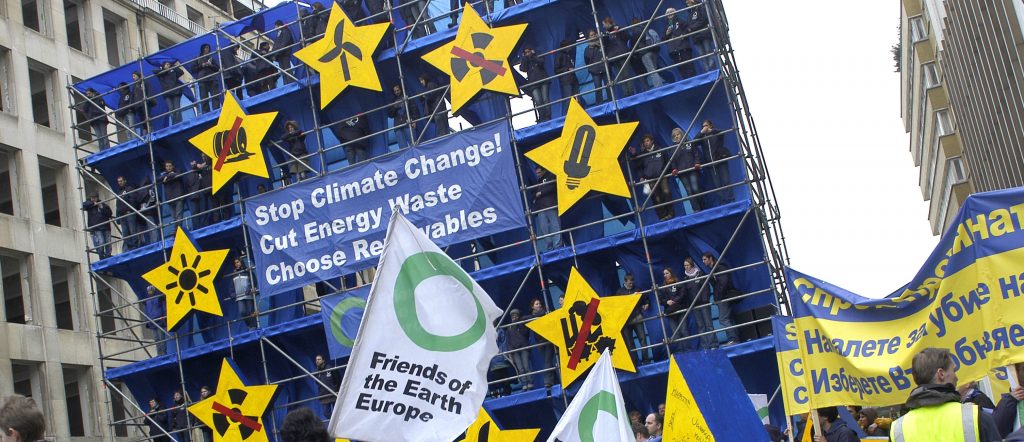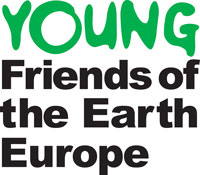Brussels, March 9th – Friends of the Earth Europe has welcomed a tentative commitment by EU leaders to fighting climate change at the EU Spring Council today, but laments that the adopted steps are still too timid. Heads of States gave a modest boost to the uptake of renewable energies, but agreed that the EU should aim low on cutting greenhouse gases; and failed again to agree any concrete commitment towards reducing Europe’s appalling waste of energy.
Jan Kowalzig, climate campaigner at Friends of the Earth Europe, said:
“It is disappointing that EU leaders didn’t go further to cut down on Europe’s carbon dioxide emissions. Their effort is particularly tame in light of warnings from the world’s scientific and economic experts that man-made climate change if left unchecked will cause chaos around the world and global economic recession.”
EU leaders adopted a unilateral target to reduce greenhouse gas emissions by 20% by 2020 compared to 1990 levels, alongside a recommendation that developed countries actually should make a 30% cut, in order to avoid the worst of global warming. Friends of the Earth Europe has called into question the strategic sense of this apparently conflicting conclusion, predicting that the EU now has a tough challenge to convince other developed countries to take on the higher target.
“It will be interesting to see the EU trying to persuade President Bush that he should reduce America’s emissions by 30% by 2020 compared to 1990 levels, when EU leaders cowered away from adopting such a target for themselves today,” Mr Kowalzig commented.
A target to provide 20% of Europe’s primary energy from renewable sources was agreed today. Friends of the Earth Europe welcomes the binding nature of this target but stresses that the target should have been higher, given the urgency to drastically cut back greenhouse gas emissions from conventional energy. Crucially, the 20% broad target was not supported by specific sub-targets across sectors like electricity or heating and cooling. Removing this sectoral support is a step backwards from the current policy and is a move that even the European Commission itself has admitted will stunt investment.[1]
“Agreeing such a vague target on the share of renewables instead of sector-specific targets, is leaving in limbo how to generate enough confidence for investors to spur massive commercial uptake of renewable energies in all sectors, including electricity and heating and cooling. The EU must now develop clever strategies to guarantee that this target does not flop,” Mr Kowalzig added.
The EU leaders reached only a very weak agreement regarding energy efficiency, urging each member state to fulfil Europe’s potential to cut energy waste by 20% by 2020, but without concretely making the request into a real commitment. Friends of the Earth Europe insists that the Energy Efficiency Action Plan, finalised in November last year, must now be strictly implemented.
Friends of the Earth Europe has expressed alarm that the Heads of State cast a role for nuclear power in Europe’s energy future, without offering solutions to its unsolved problems: how to treat and store waste for thousands of years, the risk of serious accidents, the proliferation of nuclear weapon material and how to secure nuclear plants against terrorist attacks. Friends of the Earth Europe reiterates that nuclear power is far more expensive than alternative ways to reduce emissions. Studies show that every Euro spent on new nuclear power could save ten times more emissions if it was invested in energy conservation measures – thus also securing energy supply ten times cheaper.[2]
***
NOTES:
[1] The European Commission’s own impact assessment of the proposed “Renewable Energy Roadmap”concludes that failing to agree sector-specific targets will delay technological development and commercial deployment of renewable energies and increase climate change abatement costs in the long-term. It notes that “a single broad target is too unfocused and would fail to provide sufficient guidance and certainty to businesses operating in specific sector of the market.” See ‘Renewable Energy Roadmap – Impact Assessment’, SEC (2006) 1719. [2] The high costs of nuclear power result from not only the costs of constructing and operating the plant, but also waste treatment and storage for thousands of years and the costs of decommissioning the plant at the end of its life-span. See “Nuclear power: economics and climate protection potential”: Rocky Mountains Institute; January 2006; available at http://www.rmi.org







